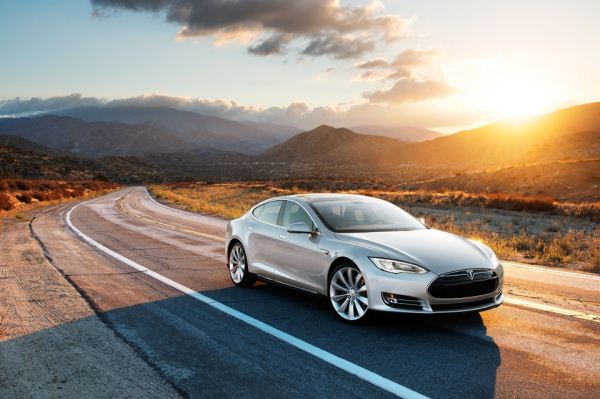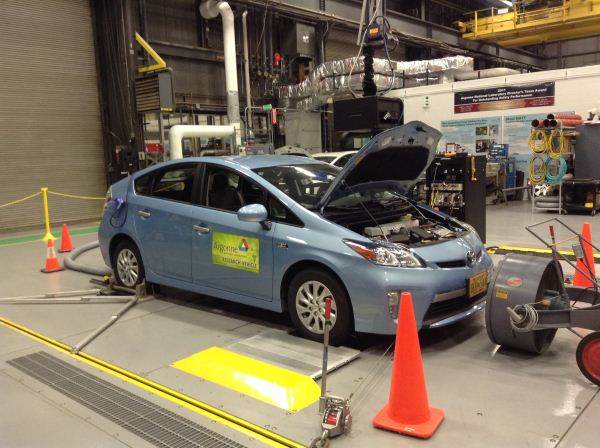The Tesla Model S Controversy: Understanding the Effects of Temperature on Electric Vehicle Efficiency and Range
by Vivek Gowri on February 18, 2013 4:22 PM EST- Posted in
- Auto
- Electric Vehicles
- Tesla Model S
- Nissan Leaf
Thus far, plenty of ink has been spilled regarding the Tesla Model S and the fallout from the New York Times article, and it even showed up in our latest podcast. I feel like my perspective on this topic, as someone who has worked in the EV space as an engineer for the last four years, as well as driving a family owned Nissan Leaf for the last year and a half, is a bit different from our editors who discussed it, as well as most of the others who have written about it.
I’m not particularly interested in getting involved with the back and forth or analyzing what either party said - I feel like the Times reporter didn’t really understand how EVs work, nor how to drive them, and I don’t really agree with Elon Musk’s Matlab data infused response (it felt too vitriolic to get across any point other than Tesla being angry about the article). And just to go back to the point about not understanding how EVs should be driven, you have to tailor your driving style to suit the powertrain in order to get the maximum out of the EV - if you don’t want to, you’re going to be disappointed. Consider it like needing to switch keyboard shortcuts when you move from Windows to OS X - it’s a slight mental recalibration that has to happen for you to use the platform to its fullest. But that’s another story for another time.
What I feel like is getting lost here is actual EV performance in cold weather, or hot weather, or really anything in the way of hard numbers. We all know that battery performance is reduced in more extreme environmental conditions, and that all cars, regardless of powertrain type, consume more energy (fuel or battery) in those extreme climates. Unfortunately, quantifying these general ideas is a bit more difficult. That’s where I come in.
Technology Background
First, a bit of background. I spent the last few months working in Argonne National Laboratory’s Advanced Powertrain Research Facility (APRF). They’re an extremely knowledgeable group of engineers and scientists whose job it is to test advanced technology vehicles in their temperature controlled dynamometer facility, which can sustain temperatures anywhere between -5 F to 100 F. Most of this research is done as a part of the Department of Energy’s Vehicle Technology Program.
Everything from pure electrics to plug-in hybrids, normal hybrids, clean diesels, direct engine turbos, and advanced transmissions (dual-clutch, CVT, etc.) go through the labs with an extended set of instrumentation to collect various speed and consumption metrics. The resulting data sets are truly comprehensive (2 million data cells for 20 minutes on the dynamometer) and allow the researchers to draw conclusions about the various powertrains and their behavior. It’s a pretty impressive setup.
The APRF has released some of the data to the public in something called the Downloadable Dynamometer Database. The D3 pages for the Nissan Leaf includes data from the three different temperatures used in EPA’s 5-Cycle fuel economy test: 20F (with a heater load), 72F (climate control off), and 95F + sun lamps (with an air conditioning load). In all cases involving heating or air conditioning, the climate control system is set to 72F. Using this data, we can take a more in depth look at what the actual penalties of environment are on efficiency and performance, and really see the impact of temperature on energy consumption and range.
Before we start, I should probably explain the terms used in the graphs that follow. UDDS is an urban driving cycle (it stands for Urban Dynamometer Driving Schedule), CS stands for cold start (the first start after the vehicle has been sitting for a number of hours), HS is hot start (any subsequent start after the vehicle has warmed up), HWY is short for HWFET or Highway Fuel Economy Test (also seen as the Highway Fuel Economy Driving Schedule or the EPA’s highway fuel economy cycle), and US06 is a supplemental federal test procedure (SFTP) to provide a more aggressive driving schedule than the relatively tame HWFET cycle. A comparison of the three driving cycles (speed versus time) is shown above.













102 Comments
View All Comments
wetwareinterface - Tuesday, February 19, 2013 - link
top gear did a hatchet job???they said the car performed well with great accelleration and a fast top speed. handling wasn't as good as the lotus the car is based off of. range when driving fast was also dreadful.
overall they said the car was pointless given that it cost more than the lotus, had only marginally better accelleration and top end, and would stop after 55 miles of hard driving and require 8-12 hours of recharging.
the fact is the tesla roadster is a bad idea all around and is only for the ultra rich to collect and use as a toy on short runs.
the tesla s also has abysmal range in cold weather, and takes a along time to charge. it's completely unusable for an only car based on range alone. you might as well state that the tesla's 311 miles is the max driving per day given the recharge time.
when they make hydrogen cars a reality and store electricity as said hydrogen instead of in a battery then a car that runs off the grid will make sense. until then unless there's a huge leap forward in battery technology we won't see a practical electric vehicle.
Aikouka - Wednesday, February 20, 2013 - link
That link is the exact reason why I asked.I remember when the Top Gear lawsuit first became news, and I gave Tesla a fair shot with it. Since the segment happened a bit prior to the news, I had to rewatch it to properly form my opinion. Honestly, I couldn't see what Musk was belly aching over. Probably the first 75% of the review was praising the upsides versus a petroleum-based vehicle, and the latter portion was discussing the downsides (range and charge time).
After this latest issue, it's pretty obvious that Musk needs a few lessons in being a company figurehead.
Beaver M. - Tuesday, February 19, 2013 - link
But its true!Ive driven one myself and it is 100% true that the batteries dont last very long if driven like a sportscar! It also had quite a few other quality issues.
Death666Angel - Tuesday, February 19, 2013 - link
Duh. The suite was dropped by the judge btw. The show was scripted and edited in a way to provide entertainment but nothing they states was untrue.JPWhite - Tuesday, February 19, 2013 - link
It's only libel if it's not true.othercents - Monday, February 18, 2013 - link
I think we should be looking at changing car testing now since obviously there has been significant discrepancy in multiple vehicle MPG tests and I don't think they correctly reflect real world driving compared to older vehicles. In the past you could count on a 2-4MPG difference between tested MPG rating and real world, however now I have see as much as 20MPG difference which if properly informed a buyer might choose a different vehicle with lower tested MPG, but gets better real world MPG.blowfish - Monday, February 18, 2013 - link
Good article, Vivek, and the more so coming from an actual EV user.The fact remains that people are obsessed about range - whereas most commutes are only a few miles, and so even the 46 mile range of the Leaf in worst case conditions is more than adequate. For longer trips, maybe a charging trailer equipped with a generator would be the way forward until such time as battery technology has improved.
Sadly, most drivers are probably unable to adapt their driving styles. Every day, I see folks flooring it between stoplights, rather than driving at the appropriate speed so as to get the "green wave". Those who do try to drive sensibly find others cutting in front of them, desperate to gain those one or two places that are evidently such an important part of their lives....
The real way forward for shorter commutes, however, is for people to get on their bikes, and get healthy as a side benefit. Here in Louisiana, however, cyclists are often assumed to be people who can't afford cars, and regarded as a nuisance by most drivers, and when you ride a bike on the road, you are aware that you are risking your life.
Guspaz - Monday, February 18, 2013 - link
Models of the Nissan Leaf sold in cold-weather countries like Canada feature various changes to function better in low temperatures. One example is that the Canadian model comes with a battery heater to improve efficiency at low temperatures, while the US model, to my knowledge, does not.It's not really fair to test the US model of the Nissan Leaf in cold temperatures. One of the cold-weather models should have been tested instead.
bobbozzo - Monday, February 18, 2013 - link
20F is not very cold.It was 27F in southern California recently, in the LA metro area.
In the mountains would be even colder.
Also, it gets below 0F MANY places in the US.
cmart - Tuesday, February 19, 2013 - link
Gets? It stayed below zero, day and night, for eight days here recently (Northern Minnesota).